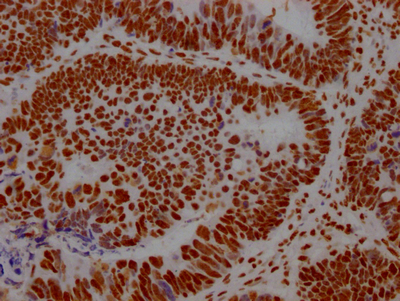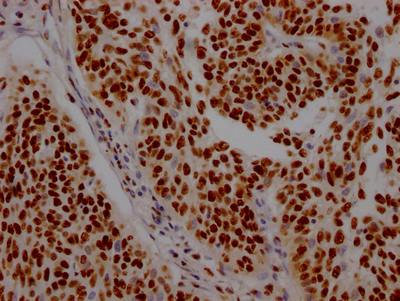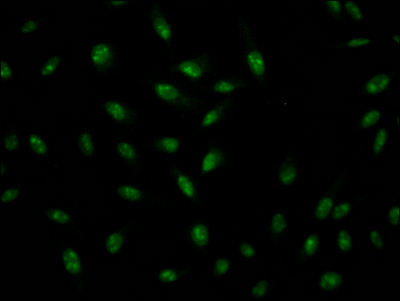To produce the ILF3 recombinant antibody, the ILF3 monoclonal antibody gene is first sequenced. The gene is then cloned into a plasmid vector and introduced into a host cell line. The resulting cells produce the ILF3 recombinant monoclonal antibody, which is purified from the cell culture supernatant using affinity chromatography. Finally, the purified antibody is tested and characterized. The ILF3 monoclonal antibody is derived from hybridomas that produce the ILF3 antibody. During the production of the ILF3 monoclonal antibody, a synthesized peptide from human ILF3 is used as the immunogen. The ILF3 recombinant monoclonal antibody is recommended for use in ELISA, IHC, and IF applications to detect human ILF3 protein.
The ILF3 protein, also known as NF90, is involved in various cellular processes such as transcriptional regulation, RNA splicing, RNA stability, RNA transport, and translation. It is known to bind to dsRNA and participate in the formation of protein complexes that regulate gene expression. It has been shown to interact with various transcription factors and enhance or repress transcription depending on the context. Moreover, ILF3 has been implicated in the regulation of RNA splicing, where it can bind to splicing factors and influence the processing of pre-mRNA transcripts. Dysregulation of ILF3 activity has been linked to various diseases, including cancer and viral infections.








